News
Amazon to Launch 15-Minute Delivery Service, Targets 20 Lakh Jobs in India!
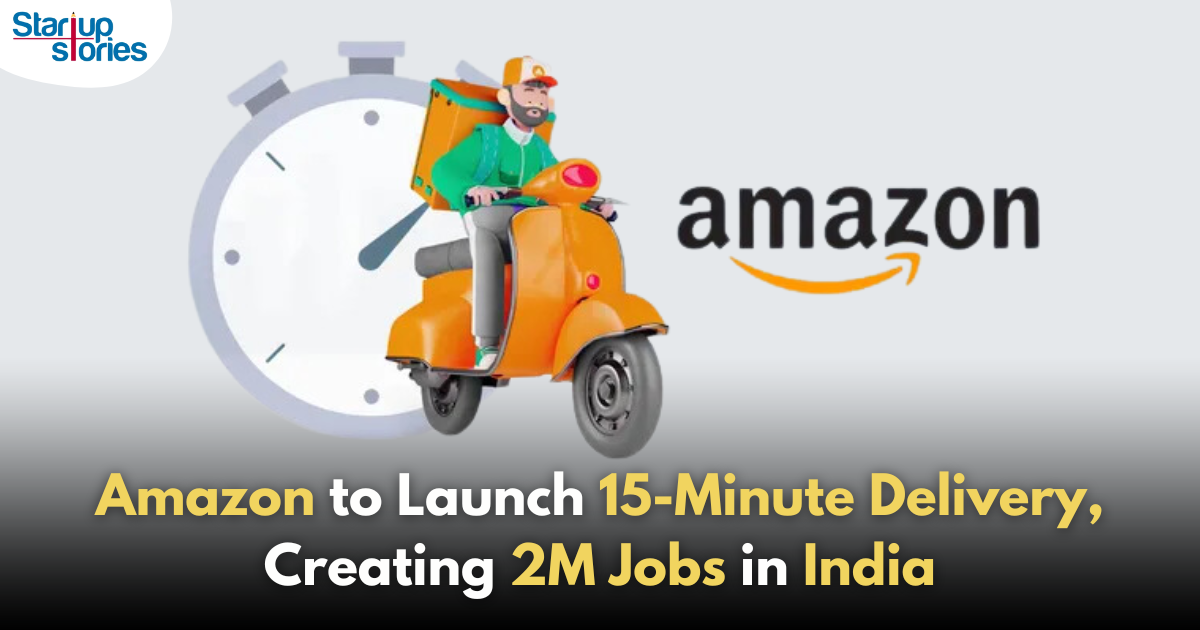
Quick Commerce Push
- Service Launch: Amazon India is set to introduce a 15-minute delivery service called Amazon Tez, marking its entry into the fast-paced quick commerce sector.
- Competition: This initiative aims to compete with established players like Blinkit and Zepto, which have already made significant inroads in offering rapid delivery of essential goods.
- Initial Rollout: The service will initially launch in selected locations, starting with a pilot program in Bengaluru, before gradually expanding its reach to other urban areas across India.
- Customer Demand: Samir Kumar, Country Manager of Amazon India, emphasized the growing consumer demand for quick deliveries, stating that people appreciate the convenience of having essentials delivered right to their doorstep within minutes. This shift in consumer behavior reflects a broader trend toward faster service and immediate gratification in shopping.
Job Creation Initiative
-
- Job Creation Goal: In addition to its quick commerce push, Amazon India has reaffirmed its commitment to job creation, aiming to create 20 lakh (2 million) direct and indirect jobs by 2025.
- Key Initiatives:
-
- Expanding Seller Network: Amazon plans to empower small and medium businesses to sell online, thus integrating them into the digital economy and expanding its seller base.
- Building a Robust Logistics Network: The company is focused on creating jobs in warehousing, transportation, and delivery services to support the new quick commerce model. This includes enhancing its logistics infrastructure to ensure timely deliveries.
- Investing in Technology and Innovation: By investing in technology and training programs, Amazon aims to drive job growth in the tech sector, equipping workers with necessary skills for the evolving digital landscape.
Competitive Landscape
- Market Potential: The quick commerce sector in India is estimated to be worth around $6 billion, driven by increasing consumer adoption of app-based grocery shopping and the demand for fast delivery services.
- Intensifying Competition: Amazon’s entry into quick commerce is expected to heighten competition among existing players like Blinkit, Zepto, and Swiggy Instamart. The presence of multiple players in this space is likely to lead to innovations in service offerings and pricing strategies.
Summary
Amazon’s strategic initiatives reflect its commitment to innovation, customer convenience, and significant job creation in India. As it prepares to launch its 15-minute delivery service, the company is poised to disrupt current market dynamics within the quick commerce space. By combining rapid delivery with a robust job creation plan, Amazon aims not only to capture market share but also to contribute positively to India’s economy through employment opportunities. This dual focus on service enhancement and job creation positions Amazon as a key player in shaping the future of retail in India.
News
Google Launches Startup Hub in Hyderabad to Boost India’s Innovation Ecosystem
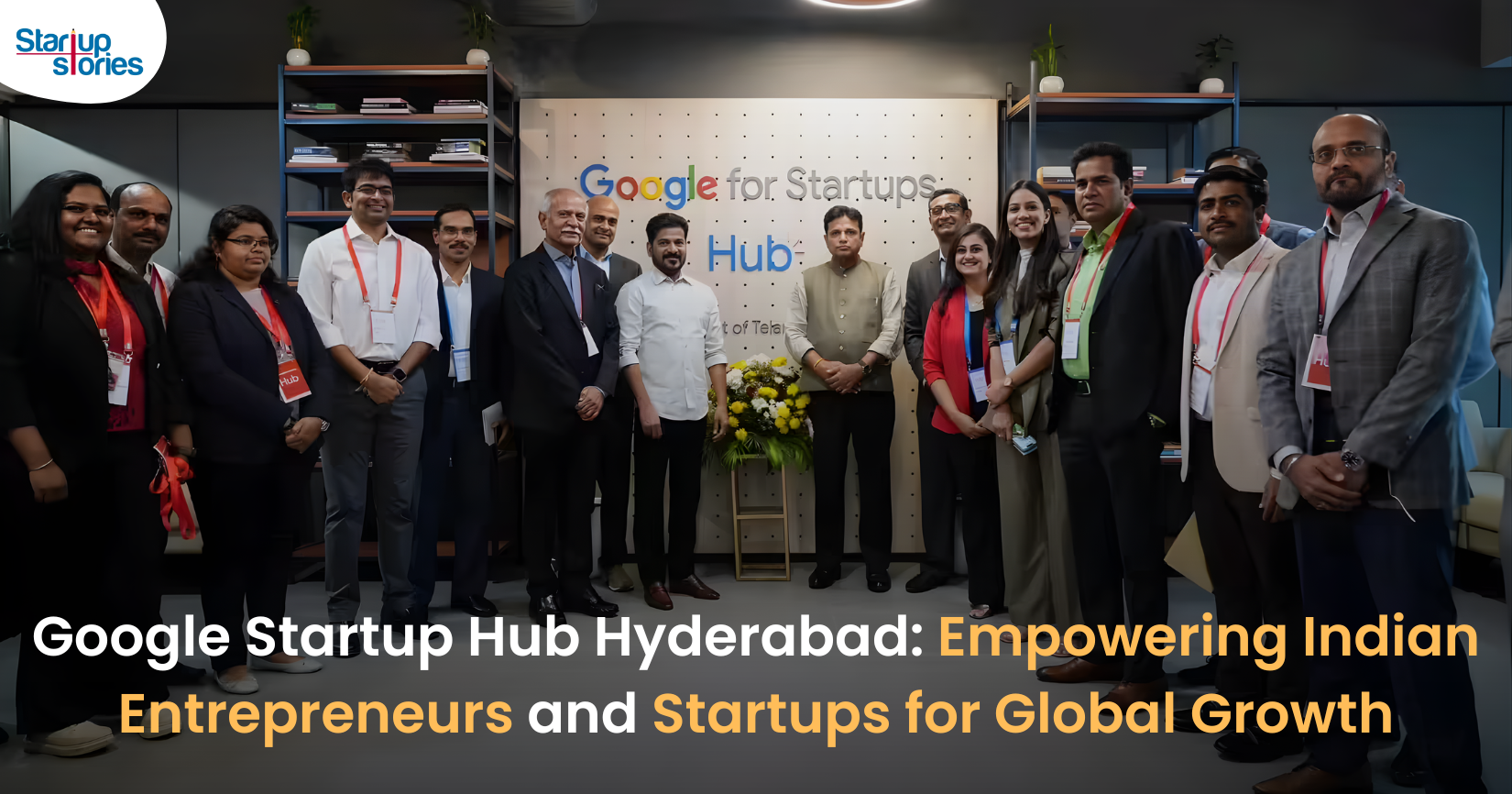
Google has launched the Google Startup Hub Hyderabad, a major step in strengthening India’s dynamic startup ecosystem. This new initiative aims to empower entrepreneurs, innovators, and developers by giving them access to Google’s global expertise, mentoring programs, and advanced cloud technology. The hub reflects Google’s mission to fuel India’s digital transformation and promote innovation through the Google for Startups program.
Located in the heart of one of India’s top tech cities, the Google Startup Hub in Hyderabad will host mentorship sessions, training workshops, and networking events designed for early-stage startups. Founders will receive Google Cloud credits, expert guidance in AI, product development, and business scaling, and opportunities to collaborate with Google’s global mentors and investors. This ecosystem aims to help Indian startups grow faster and compete globally.
With Hyderabad already home to tech giants like Google, Microsoft, and Amazon, the launch of the Google Startup Hub Hyderabad further cements the city’s position as a leading innovation and technology hub in India. Backed by a strong talent pool and robust infrastructure, this hub is set to become a growth engine for next-generation startups, driving innovation from India to global markets.
News
BMW’s New Logo Debuts Subtly on the All-Electric iX3: A Modern Evolution
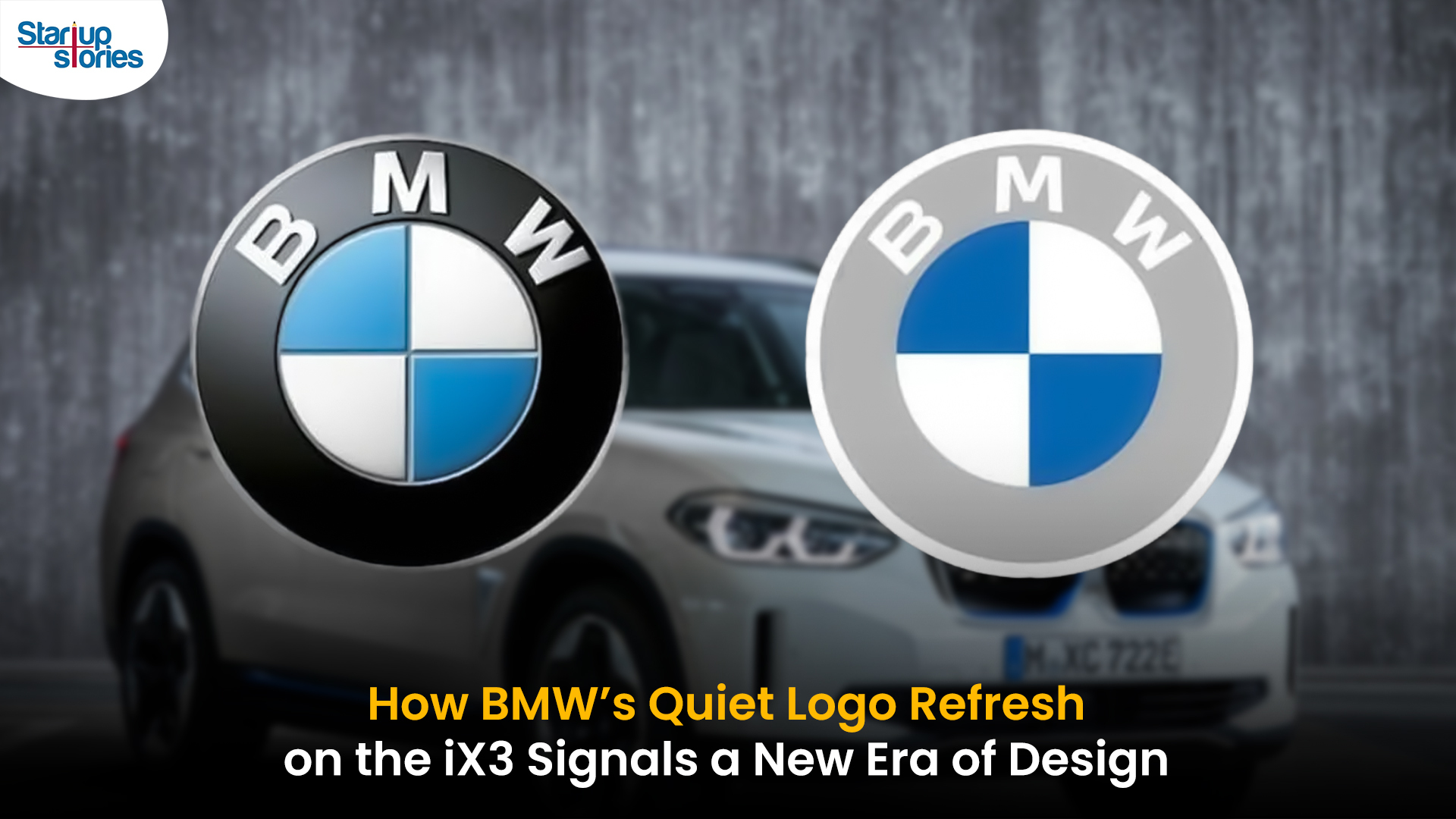
BMW quietly debuted its new logo on the all-electric iX3, marking a significant yet understated shift in the brand’s design direction for 2025. The updated emblem retains the classic roundel and Bavarian blue-and-white colors, but sharp-eyed enthusiasts noticed subtle refinements: the inner chrome ring has been removed, dividing lines between blue and white are gone, and the logo now features a contemporary satin matte black background with slimmer “BMW” lettering. These enhancements showcase BMW’s embrace of modern minimalism while reinforcing their commitment to premium aesthetics and the innovative Neue Klasse philosophy for future electric vehicles.
Unlike rival automakers that reveal dramatic logo changes, BMW’s refresh is evolutionary and respectful of tradition. The new badge ditches decorative chrome and blue borders associated with earlier electric models, resulting in a flatter, more digital-friendly design that mirrors recent branding seen in BMW’s digital communications. Appearing first on the iX3’s nose, steering wheel, and hub caps, this updated identity will gradually be adopted across all BMW models—both electric and combustion—signaling a unified brand language for years to come.
BMW’s strategic logo update represents more than just aesthetic reinvention—it underscores the brand’s dedication to future-ready mobility, design continuity, and a premium EV experience. As the new roundel begins rolling out on upcoming BMW vehicles, it stands as a testament to the automaker’s depth of detail and thoughtful evolution, offering subtle distinction for keen observers and affirming BMW’s iconic status in the ever-changing automotive landscape.
News
iPhone 17 India Price, Features & Availability: All You Need to Know
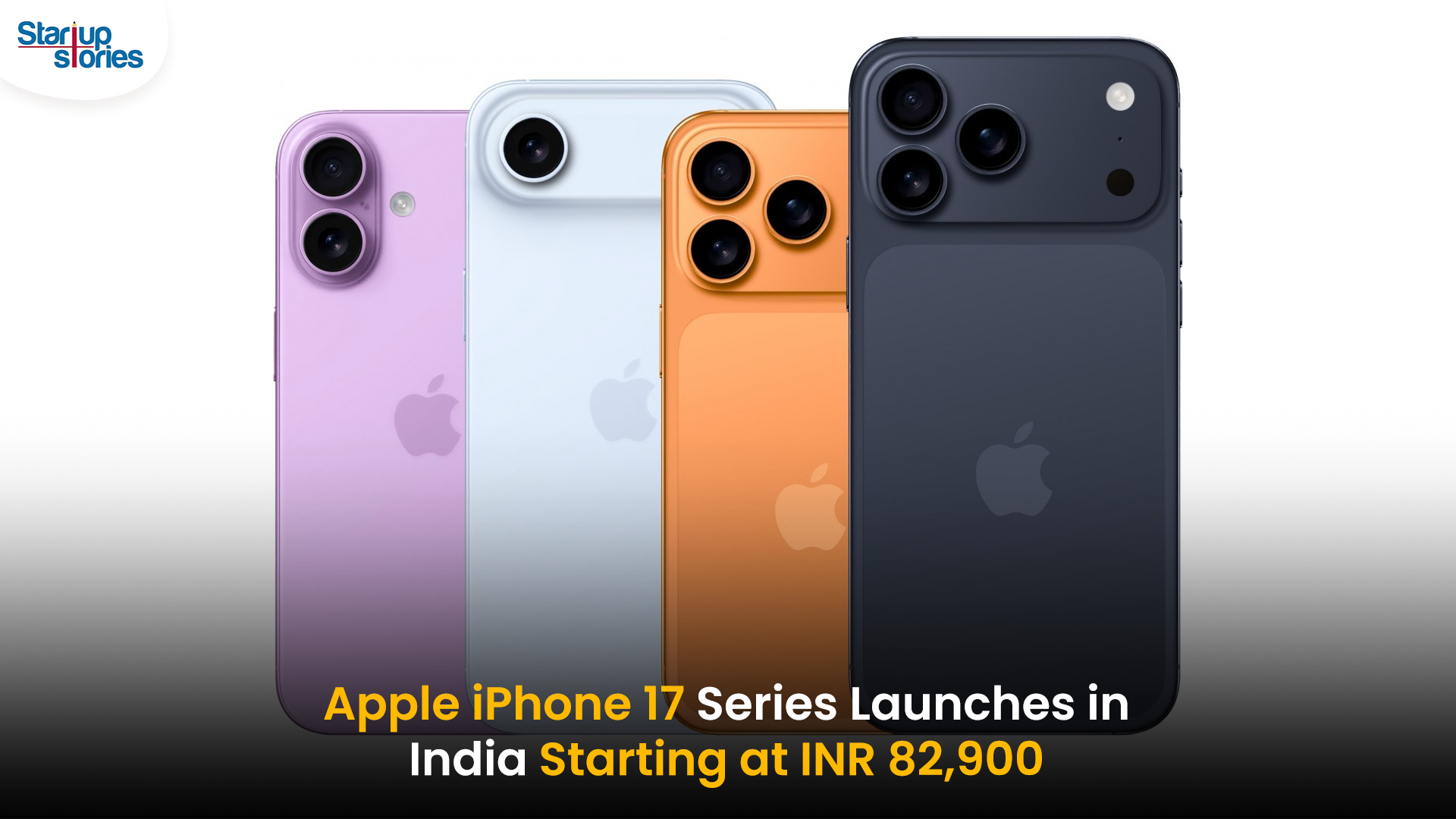
Apple has officially launched the highly anticipated iPhone 17 series in India, with prices starting at INR 82,900 for the base 256GB model. The new lineup includes the iPhone 17, iPhone 17 Pro, iPhone 17 Pro Max, and the newly introduced ultra-slim iPhone Air. Apple has removed the 128GB storage variant, making 256GB the minimum for all models. The standard iPhone 17 features a vibrant 6.3-inch ProMotion OLED display with a 120Hz refresh rate and an upgraded Ceramic Shield 2 for improved durability. It comes in fresh color options like lavender, mist blue, sage, white, and black.
The iPhone 17 Pro and Pro Max models are powered by Apple’s latest A19 Pro chip and start at INR 1,34,900 and INR 1,49,900, respectively. These Pro models feature sleek titanium frames, significant camera upgrades including 8K video recording, and up to 6x optical zoom in the Pro Max. Meanwhile, the iPhone Air, priced from INR 1,19,900, is the slimmest and lightest iPhone ever, boasting a 6.7-inch Super Retina XDR display with ProMotion technology and a triple-camera setup, positioning itself between the standard and Pro models.
Pre-orders for the iPhone 17 series commence on September 12, with sales beginning on September 19, 2025. Alongside the launch, Apple has reduced prices for the previous iPhone 16 models while discontinuing the iPhone 16 Pro and Pro Max variants. The iPhone 17 series exemplifies Apple’s ongoing commitment to enhancing display technology, camera capabilities, and overall performance, setting a new benchmark for premium smartphones in the Indian market.






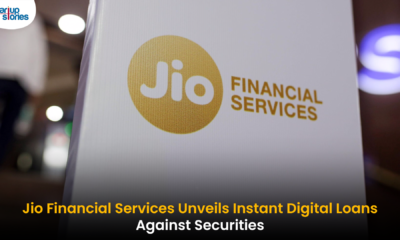








drover sointeru
December 29, 2024 at 4:52 am
I like what you guys are up also. Such intelligent work and reporting! Carry on the superb works guys I have incorporated you guys to my blogroll. I think it will improve the value of my site 🙂
Darrin Crumbly
April 15, 2025 at 3:35 am
I don’t even know how I ended up here, but I thought this post was good. I do not know who you are but certainly you are going to a famous blogger if you aren’t already 😉 Cheers!
Ettie Naillon
May 2, 2025 at 9:47 pm
wonderful submit, very informative. I wonder why the opposite specialists of this sector do not understand this. You should continue your writing. I’m sure, you’ve a great readers’ base already!
c087l
June 4, 2025 at 5:21 am
where to get clomid no prescription where to buy clomid tablets get clomiphene without rx get cheap clomiphene without insurance where can i get generic clomiphene tablets clomiphene tablets clomiphene bula homem
leadership training for mid-level managers
June 11, 2025 at 12:09 am
That is the best weblog for anyone who needs to seek out out about this topic. You notice so much its virtually onerous to argue with you (not that I actually would want…HaHa). You undoubtedly put a brand new spin on a subject thats been written about for years. Nice stuff, just great!
Catalina Mulik
July 2, 2025 at 12:03 pm
WONDERFUL Post.thanks for share..more wait .. …
Hawaii medical malpractice lawyer
July 24, 2025 at 7:37 am
I’ve been surfing online more than 3 hours today, yet I never found any interesting article like yours. It is pretty worth enough for me. Personally, if all webmasters and bloggers made good content as you did, the net will be a lot more useful than ever before.
makeup & cosmetics
August 13, 2025 at 3:55 pm
Thank you for another informative blog. Where else could I get that kind of info written in such an ideal way? I’ve a project that I am just now working on, and I’ve been on the look out for such info.
situs toto
August 21, 2025 at 8:09 am
I am not certain where you are getting your information, but great topic. I needs to spend some time learning more or working out more. Thank you for excellent information I used to be on the lookout for this info for my mission.
situs toto 176
August 22, 2025 at 1:35 pm
wonderful issues altogether, you just received a logo new reader. What would you suggest about your put up that you simply made a few days ago? Any certain?
situs toto 176
August 22, 2025 at 4:34 pm
Hey, you used to write wonderful, but the last several posts have been kinda boringK I miss your tremendous writings. Past several posts are just a little bit out of track! come on!
Joline Warne
November 3, 2025 at 2:44 am
Wow! Thank you! I continually wanted to write on my site something like that. Can I include a fragment of your post to my site?
站群程序
November 7, 2025 at 1:56 am
搭载智能站群程序,自动化搭建与管理,为SEO项目提供核心驱动力。站群程序
Kuwin
November 7, 2025 at 6:42 am
kuwin sở hữu kho game đa dạng từ slot đến trò chơi bài đổi thưởng, mang đến cho bạn những giây phút giải trí tuyệt vời.
GO88
November 9, 2025 at 5:31 am
Tham gia cộng đồng game thủ tại Go88 để trải nghiệm các trò chơi bài, poker phổ biến nhất hiện nay.
谷歌外推
November 10, 2025 at 4:08 pm
采用高效谷歌外推策略,快速提升网站在搜索引擎中的可见性与权重。谷歌外推
Quietum Plus
November 10, 2025 at 4:14 pm
Lovely blog! I am loving it!! Will come back again. I am bookmarking your feeds also.
slot deposit dana
November 11, 2025 at 8:38 pm
Hi! I’m at work browsing your blog from my new iphone 3gs! Just wanted to say I love reading through your blog and look forward to all your posts! Carry on the outstanding work!
nextogel
November 12, 2025 at 11:50 pm
Wonderful work! This is the type of information that should be shared around the web. Shame on Google for not positioning this post higher! Come on over and visit my web site . Thanks =)
Waylon Labrode
November 16, 2025 at 3:54 am
Very nice post. I just stumbled upon your blog and wanted to say that I’ve truly enjoyed browsing your blog posts. In any case I’ll be subscribing to your rss feed and I hope you write again soon!
MM88
November 16, 2025 at 1:51 pm
Với giao diện mượt mà và ưu đãi hấp dẫn, MM88 là lựa chọn lý tưởng cho các tín đồ giải trí trực tuyến.
J88
November 19, 2025 at 1:24 am
Đến với J88, bạn sẽ được trải nghiệm dịch vụ cá cược chuyên nghiệp cùng hàng ngàn sự kiện khuyến mãi độc quyền.
iwin
November 29, 2025 at 6:02 pm
iwin – nền tảng game bài đổi thưởng uy tín, nơi bạn có thể thử vận may và tận hưởng nhiều tựa game hấp
gelatin trick for weight loss
December 1, 2025 at 9:41 am
Great wordpress blog here.. It’s hard to find quality writing like yours these days. I really appreciate people like you! take care
akongcuan
December 6, 2025 at 10:05 pm
I’m not sure why but this weblog is loading extremely slow for me. Is anyone else having this problem or is it a issue on my end? I’ll check back later on and see if the problem still exists.
live sports stream today live games
December 10, 2025 at 4:50 am
Hi, just required you to know I he added your site to my Google bookmarks due to your layout. But seriously, I believe your internet site has 1 in the freshest theme I??ve came across. It extremely helps make reading your blog significantly easier.
Watch Serie A Online
December 10, 2025 at 10:40 am
I am impressed with this site, rattling I am a big fan .
KHL Live Streams Free
December 10, 2025 at 3:51 pm
Greetings! Very helpful advice on this article! It is the little changes that make the biggest changes. Thanks a lot for sharing!
Live CFB Streaming
December 11, 2025 at 2:23 am
Great website! I am loving it!! Will be back later to read some more. I am bookmarking your feeds also.
stream live NHL games
December 11, 2025 at 7:32 am
Dead pent subject matter, regards for information. “The earth was made round so we would not see too far down the road.” by Karen Blixen.
aviator game
December 11, 2025 at 11:30 pm
It’s really a great and useful piece of information. I am satisfied that you just shared this helpful information with us. Please keep us informed like this. Thank you for sharing.
1win
December 12, 2025 at 1:32 am
https://t.me/be_1win/810
bhai88
December 12, 2025 at 1:36 am
Great wordpress blog here.. It’s hard to find quality writing like yours these days. I really appreciate people like you! take care
1win
December 12, 2025 at 6:30 am
https://t.me/be_1win/828
1win
December 12, 2025 at 2:17 pm
https://t.me/s/be_1win/1066
AtomCasino
December 13, 2025 at 6:50 am
https://t.me/s/atom_official_casino
Casino
December 14, 2025 at 5:16 am
https://t.me/s/official_pokerdom_pokerdom